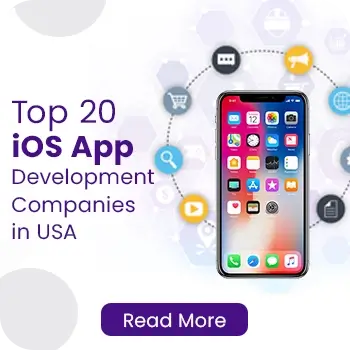Table of Contents
What makes App Store Statistics worthy of attention? Comprehending these figures is vital in our swiftly changing tech-centric world for various reasons. Initially, for developers and enterprises, the “App Store Statistics” unveil market patterns, user inclinations, and a competitive outlook. Discerning the frequency of app downloads or identifying the most favored category can steer developers toward fabricating the next sought-after app.
These statistics illuminate the apps that are molding the digital experiences for users. Be it for amusement, efficiency, or learning, the apps we engage with daily influence our lives in myriad ways. Moreover, the role of the Apple App Store has become more pronounced with the escalating dependency on mobile technology. By interpreting “Apple app store statistics,” users can make informed decisions on which apps to rely on and utilize.
It’s not merely about the figures. Every statistic conceals a narrative. What propelled a certain app to stardom overnight? What entices users towards one app while shunning another? These are queries that statistics can elucidate.
In this era, where choices are steered by data, being in tune with the recent App Store Statistics is not an opulence but a necessity. Whether you’re a developer aspiring to debut a triumphant app or a user aiming to enrich your digital voyage, these statistics furnish invaluable insights.
Now, as we venture further into the realm of Apple App Store statistics, let’s undertake this insightful expedition together. Are you prepared to unravel the tales encapsulated in the figures?
App Store Downloads
Quarterly Insights
The first quarter of 2023 saw the Apple App Store marking an astounding 8.1 billion app downloads. What does this figure represent? It echoes the soaring popularity and dependence on mobile apps in our routine lives. Be it for communication, entertainment, or productivity, apps have morphed into essential tools for many.
This swell in downloads isn’t a mere chance spike. It mirrors the advancing digital environment and the growing trust users bestow on the Apple App Store. With a rigorous app review protocol and a dedication to user privacy, the App Store has carved a niche as a trustworthy platform for quality apps.
But let’s frame this better. With over 8 billion downloads in a mere three months, it translates to, on average, every individual on Earth having downloaded at least one app from the Apple App Store during this span. This underscores the App Store’s worldwide reach and its crucial part in molding mobile experiences.
Yearly Trends
Discussing “app store download statistics” necessitates a glance beyond the quarterly data to grasp the larger trends. Across the past decade, the Apple App Store has witnessed a steady rise in app downloads. The figures have ascended yearly, mirroring the broadening user base and the eclectic array of apps serving diverse interests and needs.
For instance, during the App Store’s infancy, the primary emphasis was on basic utilities and games. Fast forward to 2023, and various apps emerge, spanning health fitness to augmented reality encounters. The “Apple app store download statistics” unveil a narrative of innovation, adaptation, and forward movement focused on user choices.
Revenue Generation
Q3 2022 Revenue
Serving as a fundamental pillar of Apple’s ecosystem, the Apple App Store has gradually emerged as a substantial revenue generator for the tech giant. In the third quarter of 2022, the App Store raked in an impressive 21.2 billion USD. But what does this number represent in a wider context?
Attaining even a slice of this revenue remains a fantasy for myriad businesses. For Apple, it symbolizes the platform’s unmatched outreach and the trust it has secured from millions of global users. Each app download, in-app acquisition, and subscription feeds into this impressive figure. And with the “iOS app store download statistics” revealing a steady climb in app downloads, it’s predictable that the revenue digits are following the trend.
Yet beyond the digits, this revenue underscores the value users discern in the apps they download. Users are prepared to invest in quality apps that amplify their digital adventure, whether a productivity gadget ramps efficiency or a game furnishes hours of amusement.
The 30% Commission
A widely debated “App Store statistics” among developers and industry savants is Apple’s 30% commission on app sales and in-app procurements. But why does Apple levy this fee, and how does it affect developers and users?
For developers, this commission is the tariff for extensive audience reach, stout security, and the App Store’s smooth payment framework. While some may contend that 30% is a steep rate, others view it as a balanced trade-off for the boons they obtain in return. Indeed, hosting an app on the Apple App Store denotes exposure to millions of prospective users, and the trust allied with the platform often morphs into higher sales and downloads.
This commission ensures users can access high-quality, secure apps. Apple’s rigorous review procedure, partially financed by this commission, ensures each app on the store abides by its elevated quality and security benchmarks. This dedication to user safety and experience is a significant driver behind the App Store’s triumph and the remarkable “App Store users statistics” it flaunts.
While the 30% commission may spark disagreement for some, it’s a vital facet of Apple’s monetization strategy. It guarantees the App Store remains a trusted, secure haven for developers and users, propelling its ongoing success in the competitive app arena.
App Diversity
Gaming Dominance
The Apple App Store’s digital territory has observed various seasonal shifts. Among the most prominent trends is the undeniable supremacy of gaming apps. But what fuels this rise in popularity?
Gaming apps have redefined our leisure avenues. The days are past when gaming was confined to consoles or PCs. With the inception of the App Store, superior gaming encounters are now merely a tap away on our iPhones and iPads. “iPhone app store statistics” unveil that a substantial fraction of downloads is ascribed to games, extending from simple puzzles to complex multiplayer quests.
But the scope transcends mere amusement. Gaming apps have morphed into arenas where users can interact, contest, and gain. They cater to a varied populace, from casual gamers seeking a swift diversion to committed players dedicating hours to their cherished titles. This broad allure is a testament to the adaptability and novelty of gaming apps on the App Store.
Educational and Productivity Apps
While games persist in seizing the spotlight, another class of apps is advancing markedly on the App Store: educational and productivity apps. These apps, often overshadowed by gaming behemoths, have etched a distinct segment for themselves, becoming invaluable for numerous users.
The demand for apparatuses that boost productivity is increasingly critical in the contemporary, swift-paced realm. Be it a task manager to structure your day or a note-taking app to jot down transient thoughts, the App Store furnishes a multitude of alternatives tailored to individual requisites. “iOS app store statistics” display a steady ascent in the downloads of such apps, mirroring their escalating significance in our daily regimes.
On the education spectrum, the App Store has reformed learning. The prospects are boundless, from language learning apps to platforms presenting extensive courses on various subjects. For learners across ages, these apps offer a flexible and engaging means to accrue new skills or knowledge, transcending the limits of conventional education. As we traverse the digital epoch, these “App Store Statistics” render invaluable insights into the apps molding our encounters and the trends delineating the future of mobile technology.
App Pricing: Free vs. Paid
Why Most Users Gravitate Towards Free Apps
Within the broad expanse of the Apple App Store, two app categories reign supreme: free and paid. However, diving into the “App Store Statistics,” a distinct pattern was unveiled: the majority of users are drawn towards free apps. What drives this preference?
The core reason hails from the fundamental human nature of averting risks. Faced with a choice between a free app and a paid one, users generally lean towards the free variant to sidestep the potential regret of monetary loss on something that may not hold value. Moreover, free apps extend a platform for users to get a feel of the app. They might ponder over in-app purchases or advance to a premium version if they find it appealing.
Further sweetening the appeal of free apps are the marketing methodologies deployed by “mobile app development companies in USA.” Offering a free iteration of their app, these firms can reel in a wider user base, accumulate feedback, and polish their offering. Over time, this strategy can bolster brand allegiance and possibly open revenue streams from other channels.
The Value of Paid Apps
While free apps hold their allure, paid apps have unique merits. But what underpins their price tag, and why would users shell out money for an app amidst free alternatives?
To begin with, paid apps usually promise a more polished user interaction. Users can delve into the app’s features sans interruptions like in-app adverts, fostering a streamlined, pleasurable user journey, which can be a strong selling point for many.
Furthermore, when users allocate money towards an app, they often unlock premium attributes, elevated functionalities, and superior customer assistance. This added merit can validate the purchase, particularly for apps pivotal to a user’s daily routine or work engagements.
Moreover, an “enterprise mobile app development company” often channels more resources into crafting and sustaining paid apps. This dedication ensures the app maintains a high-quality standard, undergoes regular updates, and stays clear of bugs or problems.
Free apps present accessibility and a risk-free trial, while paid apps vouch for quality, premium features, and hassle-free user engagement. The choice often falls to individual preferences, needs, and the app’s perceived value.
Transform your Concept into a Top-notch iOS App.
Contact us to Discuss your Project and get a Free Consultation.
User Engagement: Keeping the Apple Community Active
Strategies Employed by Apple to Ensure Consistent User Engagement
In the dynamic market arena of the Apple App Store, maintaining steady user engagement is indeed a grand endeavor. Amidst millions of apps clamoring for attention, how does Apple ensure its users stay active and engaged? The solution rests in a blend of inventive strategies coupled with user-focused methods.
Primarily, Apple accentuates the importance of app quality. It traverses a stringent review mechanism before showcasing an app on the App Store. This ascertains that users encounter high-quality apps delivering genuine value. When users harbor trust in the platform, they frequently engage with it.
Another tactic Apple employs is the App Store’s amalgamation within its ecosystem. Features like Handoff and Continuity enable users to effortlessly switch between devices, rendering the engagement journey smooth and intuitive.
Moreover, Apple taps into the realm of personalization. The App Store proffers personalized app suggestions using machine learning and user behavior scrutiny. This amplifies the user experience and heightens the prospects of app discovery and engagement.
The Role of App Recommendations and Top Rankings
“App Store Statistics” persistently underscore the essence of app recommendations and top rankings in propelling user engagement. But what renders these features so potent?
Initially, recommendations serve as beacons in an expanse of apps. They aid users in unearthing new apps that resonate with their interests and requisites. By extending tailored recommendations, Apple ensures that users extract value with every App Store visit, augmenting the likelihood of steady engagement.
Top rankings, conversely, fulfill a dual function. For users, they spotlight the most favored and credible apps across diverse categories. This minimizes the exertion entailed in app discovery and decision-making. For developers and “custom mobile app development services,” attaining a top rank is a mark of distinction. It denotes trust, quality, and popularity, often culminating in heightened downloads and user engagement, thus forming a positive feedback cycle.
Furthermore, these top rankings and suggestions often emanate from collaborations with “custom mobile app development company” allies. Apple cultivates a community where quality and user gratification are supreme, ensuring the finest and most pertinent apps gain prominence.
Developer’s Perspective: Hosting on the App Store
The 30% Commission Debate
The Apple App Store is a promising developer platform with its expansive user reach and rigorous quality assessments. However, a recurring topic of discussion is Apple’s 30% commission on app sales and in-app acquisitions. From a developer’s angle, does this commission hold merit?
On the one facet, the 30% commission might appear substantial. For numerous “Enterprise Application Development Companies in the USA,” this deduction could notably influence their revenue, particularly those newly inaugurated or operating on lean margins. The inquiry materializes: Why should developers relinquish nearly a third of their income?
Nonetheless, a broader scenario unfolds upon exploring the “App Store Statistics” thoroughly. This commission is not merely a fee; it embodies an investment in the ecosystem nurtured by Apple. In reciprocity for this commission, developers obtain access to a global clientele, a secured and streamlined payment infrastructure, and a platform renowned for quality and reliability. Moreover, Apple’s stringent review methodology, partly financed by this commission, ascertains that apps adhere to elevated standards, amplifying their authenticity in the user’s perception.
How the App Store Aids in App Success
Transcending the monetary elements, another vital factor developers evaluate when situating their apps on the App Store is visibility. In a marketplace brimming with apps, how does one garner attention?
Apple has responded to this impediment by extending diverse promotional prospects for developers. From spotlighting apps on the App Store‘s main page to incorporating them in curated compilations, Apple delineates numerous pathways for apps to attain momentum. These promotional positions are highly coveted, and rightly so. They can markedly augment an app’s downloads and user interaction.
Additionally, the algorithmic recommendations of Apple hold a crucial stature. The App Store proffers personalized app endorsements by scrutinizing user behavior and inclinations, escalating the probabilities of app discovery. For developers, especially those engaging “mobile app consulting services,” their app can resonate with the appropriate audience without substantial investment in marketing.
Global Reach: Apple’s Worldwide Influence
The Apple App Store transcends a mere digital bazaar; it stands as a worldwide marvel. Its footprint across more than 155 nations makes its sway over global mobile app tendencies emphatically apparent. Yet, what embodies the precise magnitude of this impact?
Within the realm of “App Store Statistics,” it is discernible that the App Store has acted as a trend precursor in manifold ways. Be it pioneering avant-garde app genres or establishing benchmarks in design and functionality, Apple has persistently escalated the standards for mobile applications. This progression has spawned a reverberation, with the “Best iOS App Development Companies” endeavoring to align with and surpass these benchmarks, influencing app trends on iOS and other platforms.
The extensive outreach of the App Store denotes it as a crucible of varied cultures and inclinations. An app garnering popularity in the USA might vary from what resonates in Japan or Brazil. This heterogeneity poses both a hurdle and a prospect for developers. It propels them to craft applications that appease a global clientele while furnishing localized experiences.
Regional Differences in App Preferences and Downloads
Although the App Store is a universal podium, regional subtleties markedly mold app predilections and downloads. For instance, gaming apps might hold sway in East Asian territories, whereas productivity applications may witness heightened downloads in North American locales.
Cultural elements, economic standings, and local occurrences can sway app trends within a specified region. For instance, amid a significant sports event in a country, sports-centric apps might experience a boost in downloads within that territory.
Moreover, localization transcends mere language. It encompasses comprehension of local traditions, behaviors, and desires. The best iOS app development companies acknowledge this aspect and allocate resources toward fabricating tailored experiences for disparate regions. This refines user experience and amplifies the likelihood of app triumph across diversified markets.
Swift vs. Flutter: Which One to Choose for Your iOS App Development
1. Performance
Swift:
Swift is known for its high-performance characteristics. As a native framework, it grants smooth performance and quicker execution, making it indispensable for intricate apps.
Flutter:
Conversely, Flutter, identified as a cross-platform framework, might not reach the performance pinnacle like Swift. Nonetheless, it furnishes respectable performance, which is generally satisfactory for various app genres.
2. Code Structure
Swift:
Swift boasts a clear and succinct code structure, simplifying developers’ writing and managing tasks. This lucidity in code structure is advantageous for extensive projects involving a team of developers.
Flutter:
Flutter exhibits a more intricate code structure than Swift, which could present a hurdle for developers, particularly the novices to the framework.
3. UI Components
Swift:
As a native framework, Swift avails a broad spectrum of premium native UI components, ensuring an enhanced user experience.
Flutter:
Similarly, Flutter provides a wealthy assortment of customizable widgets capable of crafting an engaging UI, albeit with a distinctive ambiance.
4. Community and Support
Swift:
Swift enjoys a robust community and exemplary support from Apple, marking a significant advantage for developers.
Flutter:
Though relatively nascent, Flutter is swiftly expanding its community, with the support also amplifying progressively.
5. Development Cost
Swift:
Embarking on development with Swift could be pricier owing to its native essence, necessitating distinct code for diverse platforms.
Flutter:
Conversely, Flutter, acknowledged as a cross-platform framework, could notably diminish the development expenditure since the identical code caters to various platforms.
The App Store Statistics further unveil a rising count of apps crafted using both frameworks, underscoring their popularity and efficacy in iOS app development services. By synchronizing your selection with your project’s objectives and the prevailing market tendencies, you stand to embark on a triumphant iOS app development expedition.
Comparing Apples to Androids: App Store vs. Google Play
In mobile app platforms, two monikers distinctly emerge: Apple’s App Store and Google Play. Each exhibits prowess, and both have secured substantial segments of the market. Yet, how do they measure against each other when we delve into the “App Store Statistics“?
Concerning pure volume, Google Play holds an edge with a greater array of available apps. This aspect largely stems from the liberal ethos of the Android platform, which invites a wider spectrum of apps and developers. Nonetheless, abundance doesn’t invariably translate to excellence. The App Store frequently showcases more refined and user-friendly apps because of its rigorous review procedure.
On the financial front, the App Store regularly outstrips Google Play, notwithstanding a lesser app count. This scenario reflects Apple’s prosperous user community, which tends to spend more on apps and in-app acquisitions.
User Preferences Based on the Platform
User predilections exhibit considerable variance between the two platforms, and grasping these subtleties is pivotal for developers and enterprises.
For instance, iOS users often champion privacy and security. Apple’s steadfastness towards these principles and its enclosed ecosystem resonate with this user group. Consequently, apps accentuating data safeguarding or proffering premium, ad-absent experiences often fare well on the App Store.
Conversely, Android users cherish customization and diversity. The liberal framework of the Android platform accommodates a more eclectic array of apps, catering to an expansive audience. Free apps accompanied by in-app advertisements are more commonplace on Google Play, mirroring a user base that might exhibit greater price sensitivity.
A further distinguishing facet is device harmonization. Owing to its flawless amalgamation among devices like the iPhone, iPad, Mac, and Apple Watch, Apple’s ecosystem implies that apps extending cross-device functionalities frequently witness elevated engagement on the App Store.
Book 30 Minutes Free Consultations with A3logics Experts to Start Your App Journey Today!
Conclusion
As we conclude our extensive examination into the realm of “App Store Statistics,” pausing to reflect on the significant insights from 2023 is imperative. The ever-adaptive nature of the Apple App Store has unveiled some captivating figures this year.
The burgeoning volume of apps on the platform primarily elucidates a flourishing ecosystem for developers and users. The quantum of downloads has also seen a notable uptick, signifying the platform’s enduring allure for its user community.
From a broader perspective, the Apple App Store transcends being merely a platform for apps; it exemplifies Apple’s aspiration of fostering an ecosystem that prioritizes quality, innovation, and user trust. Looking ahead, one certainty prevails: the App Store will maintain its pivotal role in sculpting the mobile app environment, setting the pace, and expanding horizons.
Are you keen on delving further into the mobile apps and technology sphere? Remain abreast with the latest trends, insights, and “App Store Statistics” with A3logics. Let’s explore the tech future collectively!
FAQs
How does Apple maintain the quality of apps on the App Store?
Apple has consistently emphasized the quality of apps on its App Store. To uphold this, every app endures a stringent review procedure before becoming accessible. This procedure scrutinizes adherence to Apple’s design standards, functionality, security, and content norms.
Why is there a 30% commission on app revenues by Apple?
The 30% commission levied by Apple aligns with industry norms and aids in sustaining the expansive ecosystem crafted by the App Store. This fee channels into the maintenance and evolution of the App Store platform, equipping developers with tools and resources and securing a safe transaction avenue for developers and users.
How does the revenue of the App Store compare to that of Google Play Store?
“App Store Statistics” illustrate that the App Store habitually garners more revenue than Google Play despite fewer app downloads. This is often linked to Apple’s affluent user community, which allocates more funds to apps and in-app acquisitions. While Google Play experiences more downloads, the App Store’s monetization approaches and quality-centric user base drive higher revenue realization.
Are there specific restrictions on the categories of apps permitted on the App Store?
Indeed, Apple delineates clear guidelines concerning the categories of apps permissible on the App Store. Apps propagating hate speech, displaying explicit content, infringing intellectual property rights, or posing security threats are unequivocally forbidden.
How does Apple address apps that infringe upon its terms and conditions?
Upon detection of an app infringing Apple’s terms and conditions, it’s expelled from the App Store. Developers receive notification of the infringement and are allowed to redress the issue. Post-rectification, the app may be resubmitted for review. In extreme scenarios, developers may encounter permanent ejection from the Apple Developer Program.








